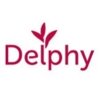What hydrology students learned about tomato plants’ drinking habits.
In the middle of the COVID-19 crisis, three bachelor students set out to analyze climate and plant data collected in Delphy’s greenhouse research facility located in Bleiswijk. An important step to learn how Plantenna can build upon existing knowledge to realize Plantenna’s future dream of wireless communicating plants.
Plant experts at Delphy have developed irrigation schemes that aim at optimizing water availability while maximizing productivity, in this case of tomato plants.

To monitor how plants respond to climate and irrigation settings, Delphy is using data from sensors in the greenhouse reporting temperature, humidity, light intensity (Photosynthetic Active Radiation, to be exact, the part of light that is relevant for plants) as well as soil moisture, sapflow, leaf temperature and more.
A crucial variable the students looked at is how much the plants transpire. Plant transpiration is important to maintain their temperature and prevent overheating, but also ensures transport of nutrients from roots to leaves and fruits (tomatoes). Transpiration is notoriously difficult to measure directly: how does one measure water vapor coming out of every tomato leaf? Surely a Plantenna challenge!
The students looked at alternative ways to estimate plant transpiration, first of all by calculating the water balance, the plant’s water bookkeeping, so to speak. By looking at irrigation, drainage, soil water storage and plant growth, they managed to estimate the plants’ water uptake. An important lesson we learned from this analysis is that soil moisture (soil being stone wool for the case of tomatoes) remains an uncertain factor that needs more intense monitoring to know how exactly irrigation water is taken up by the plants.
The analyses showed that the heat of the summer period, really put tomato plants to the test. Plant leaves heated up considerably and transpiration was insufficient to keep them cool. If only the plants could have called out when they got too thirsty. Wouldn’t it be nice to have them connected through a Plantenna network so they could call out for a drink?




